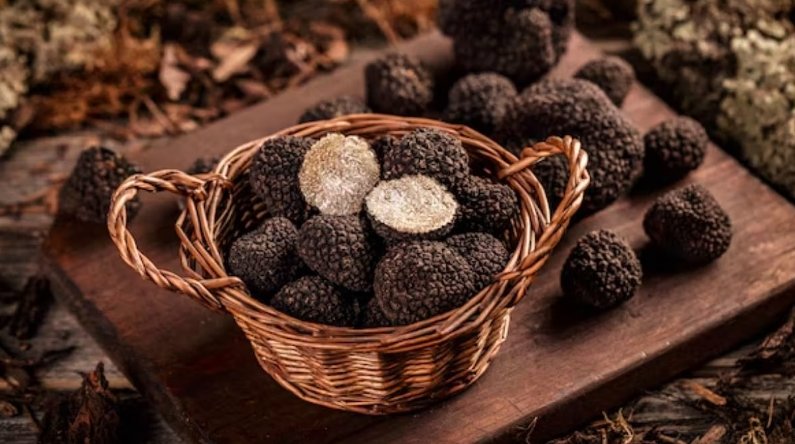Climate change is hurting truffle farms in Europe with drier conditions, but scientists say it creates ideal wetter summers for growing this luxury food in Scotland. Researchers at the University of Stirling have found success on Bute island, where truffles are thriving and fetching high prices from chefs.
Climate Change Hurts European Truffle Farms
Truffle production in places like Spain and France faces big threats from global warming. Hotter, drier summers dry out the soil that truffles need to grow.
A study from 2018 warned that Mediterranean truffle farms could vanish by 2071 if trends continue. Farmers there report lower yields each year as rain becomes scarce.
This shift pushes up prices for black truffles, which can sell for over 500 pounds per kilo. Chefs worldwide feel the pinch as supplies drop.
Recent data shows European output fell by 20 percent in the last decade. Experts link this directly to less summer rain and higher temperatures.

Scotland Gains from Wetter Summers
Scotland’s west coast sees the opposite effect from climate change. Models predict milder, wetter weather that suits truffle growth perfectly.
Professor Paul Thomas from the University of Stirling planted hazel trees on Bute in 2020. His team inoculated roots with truffle fungus, and the first harvest came this summer.
The wet conditions help the fungus bond with tree roots underground. This creates stronger, more aromatic truffles than those from drier European spots.
Local farmers note that Scotland’s peat-rich soils add to the advantage. These soils hold moisture well, supporting steady growth even in changing weather.
In 2025, reports highlight how these shifts could make Scotland a new truffle hub. Early tests show Scottish varieties resist some pests better too.
University Research Drives Innovation
The University of Stirling leads this work with hands-on trials. Their experts train dogs like Rue to sniff out hidden truffles, replacing traditional pig hunters.
Professor Thomas explains that wetter summers provide the moisture truffles crave. His models forecast growth in Scotland while Europe struggles.
This research ties into broader studies on climate impacts. It shows how some regions adapt while others suffer.
Collaborations with local farms test new methods. These include better tree spacing and soil treatments to boost yields.
Truffle Farming on Bute Island
On Bute, small-scale farms show promising results. The island’s mild climate and frequent rain create a natural greenhouse effect for truffles.
It takes about seven years for truffles to mature after planting. Once ready, they hide underground, needing skilled hunters to find them.
Chefs praise the bold flavors of Bute truffles. They use them in high-end dishes, driving demand.
- Strong aroma that stands out in cooking
- Higher resistance to dry spells compared to European types
- Potential for organic certification due to natural growing conditions
Farmers on the island plan to expand operations. They aim to plant more inoculated trees next year.
This could create jobs in rural areas. Local communities see it as a way to fight economic decline.
A quick look at key facts:
| Aspect | Europe | Scotland |
|---|---|---|
| Summer Weather | Drier and hotter | Wetter and milder |
| Production Trend | Declining by 20% in last decade | Rising with new farms |
| Truffle Quality | Weaker aroma in dry conditions | Stronger and more sought-after |
| Future Outlook | Possible collapse by 2071 | Growth potential through 2050 |
Economic Boost for Scottish Agriculture
Truffle farming offers high returns for Scottish growers. With prices up to hundreds of pounds per kilo, it beats many traditional crops.
This comes at a time when barley and other staples suffer from weather extremes. Wet summers help truffles but can flood fields for grains.
Experts predict this niche could add millions to Scotland’s economy. It attracts tourists too, with truffle hunts becoming popular.
Links to carbon-negative projects at Stirling tie in. They explore how truffle farms store carbon in soils, aiding climate goals.
Challenges and Future Steps
Not everything is easy. Training animals and waiting years for harvests demand patience and investment.
Pests and diseases still pose risks, even in wet conditions. Farmers must monitor soils closely.
Looking ahead, more research will refine techniques. Government support could speed up expansion.
Scotland might export truffles soon, filling gaps left by Europe. This turns a climate challenge into an opportunity.
What do you think about Scotland becoming a truffle powerhouse? Share your thoughts in the comments and spread the word to friends interested in food or climate news.


















